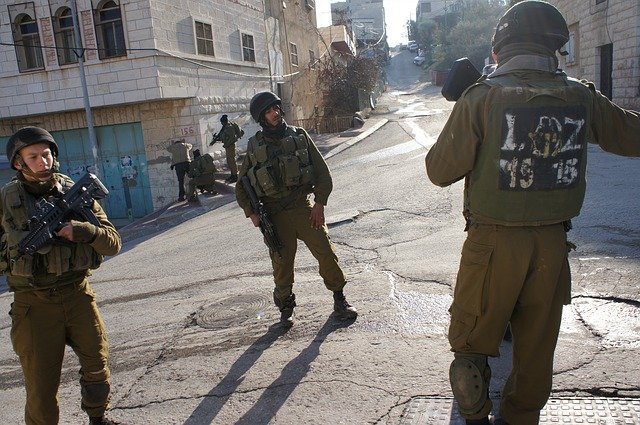How did the division begin?
In 1994, after a tragic massacre of Muslims by a radical Jewish physician from America during the holy month of Ramadan in the Ibrahimi Mosque located in the center of Hebron, the city was divided into two parts H1(80% of the city) under newly created Palestinian Authority control, and H2 (the remaining 20%) controlled by the Israelis.
The authorities at the time ostensibly thought this would prevent further violence on this scale, but undertook further policies that seemed more punitive than pragmatic such as shutting the main thoroughfare of the Old City market “Shuhada Street,” and welding shut a number of nearby stores under military orders as well. The division of Hebron into two sections under separate legal jurisdictions, involving restrictions on movement and living spaces is bound to cause a myriad of problems, some obvious and some less so. But the division itself isn’t as clear-cut as I expected the more I looked into it.
The majority of the line demarcating H1 and H2 isn’t even shown when you walk around Hebron, you can cross between the two sections from countless roads in and around the old city without any trouble. This isn’t to say that life in H2 is no different than H1, not at all. Residents of H2 experience increased harassment, delays, and an acute lack of emergency services such as ambulances and fire trucks compared to the Israeli residents of H2 and the Palestinian residents of H1.
What both sides of the city look like?
Most of H1 feels like a any other modern part of a Palestinian city, especially the main strip of Ein Sara that cuts through H1 north to south, cafes, restaurants, barbershops, and shopping centers dot both sidewalks. It’s not until you get to the Old City, and you start to see the fences, barbed wire, Israeli soldiers perched atop walls and houses, and the starkly different architecture of the settlements that tower above the Old City, when you realize the proximity of the occupation here in Hebron.
The Israeli military presence & its impacts
However arbitrary the military presence might seem, the effects it has are multifold and poignant. Some residents of H2 have to cross checkpoints within H2 just to buy groceries for example, and many children have to cross through Shuhada Street to reach their school in Tel Rumeida just across from Beit Hadassah, oftentimes facing harassment and abuse from the local settler population.
The forms of disruption aren’t uniform throughout all of H2 though, for example in Tel Rumeida specifically, Palestinian families faced the threat of removal from their homes due to a planned excavation by the Israeli Antiqueties Authority, a primarily politically motivated project, due to the historical significane of Tel Rumeida as the original sight of the city of Hebron. If you are a Palestinian in restricted H2 and in dire need of an ambulance, then your chances of survival are significantly diminished. Each ambulance must wait for a series of six telephone calls up the chain of command before they are allowed in, oftentimes this adds 45 minutes to an hour to the response time, this has naturally resulted in many preventable deaths.
The Old City of Hebron
The Palestinian population of the Old City near the settlements Avraham Avinu, Beit Hadassah and Beit Romano are especially vulnrable to settler harrassment involving garbage being thrown, water tanks being punctured and verbal harrassment as well. Due to the elevation of the settlements, this allows the settlers to throw garbage down on anyone passing below, this is the reason for nets over many of the walkways in the Old City, to protect passersby. This has contributed to the dampening of much of the lively energy that was once characteristic of the signature Mamluk style souks in the Old City, many of whom are permanently closed, resulting in empty alleyways and a noticeable loss of cultural significance. This is especially tragic seeing as Hebron has historically been the center of economic activity in the entire West Bank, a legacy that has taken a massive hit since ‘94.
Finally, many low level criminals from H1 escape to H2 since the Palestinian Authority has no jurisdiction there and Israel isn’t as interested in expending energy into pursuing these types of lawbreakers. Whether this is a deliberate strategy in hopes to make life less and less ideal in H2 or simply a cost/benefit decision on the part of Israel is up for debate, but the results are clear.
For some Palestinians their continued residence in H2 is an act of resistance, for others they just want to live their lives unbothered. Very few actually reject the right of Jewish people to live in this holy city, it’s just the occupation and its ancillary effects they take issue with. Especially the older generation who remember when they could walk around the entire city unhindered, some of whom still own properties on Shuhada Street which they don’t have access to anymore. However, Hebronites generally pray for the day when the city will become fully integrated again and life can continue unimpeded.

